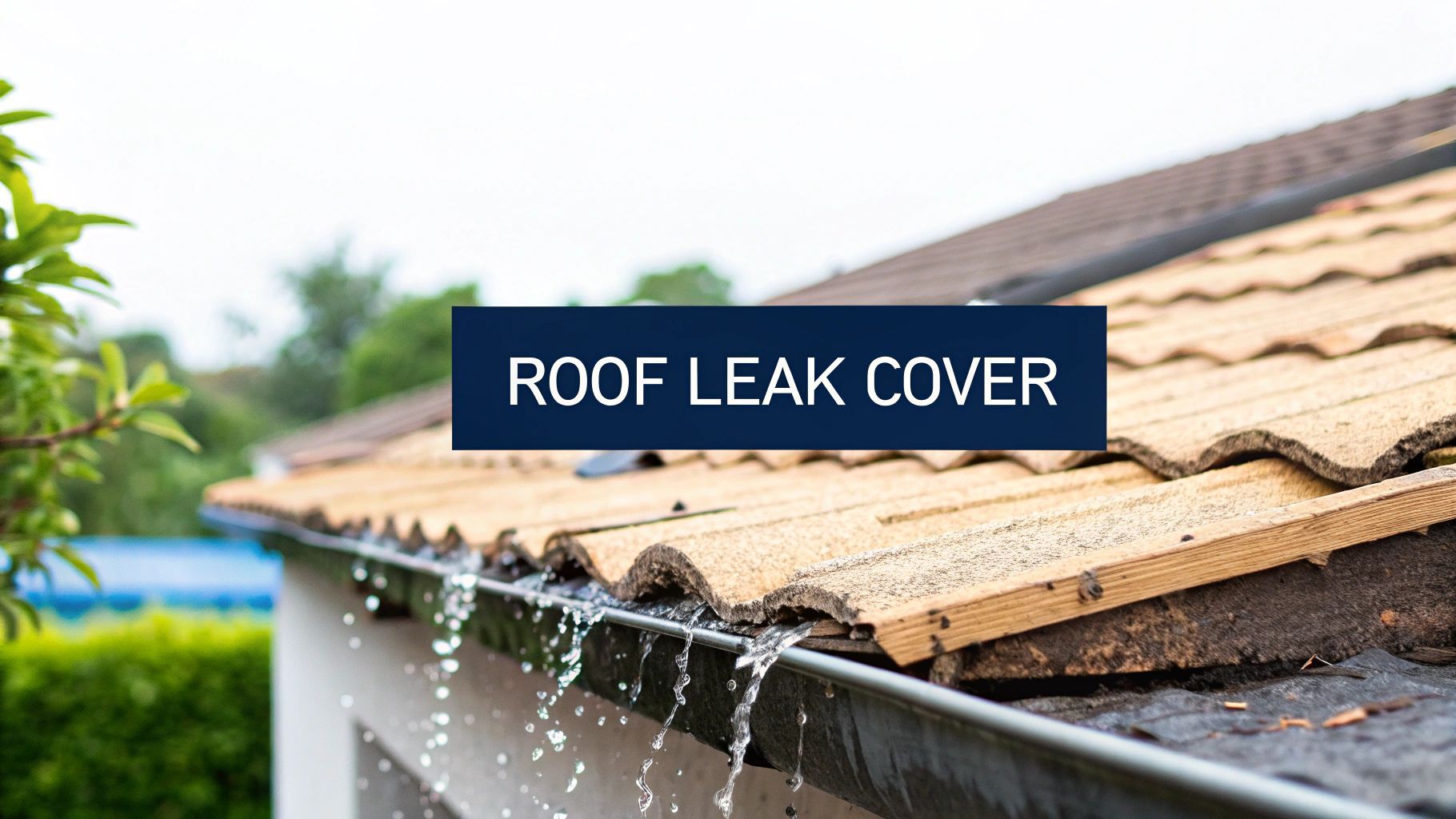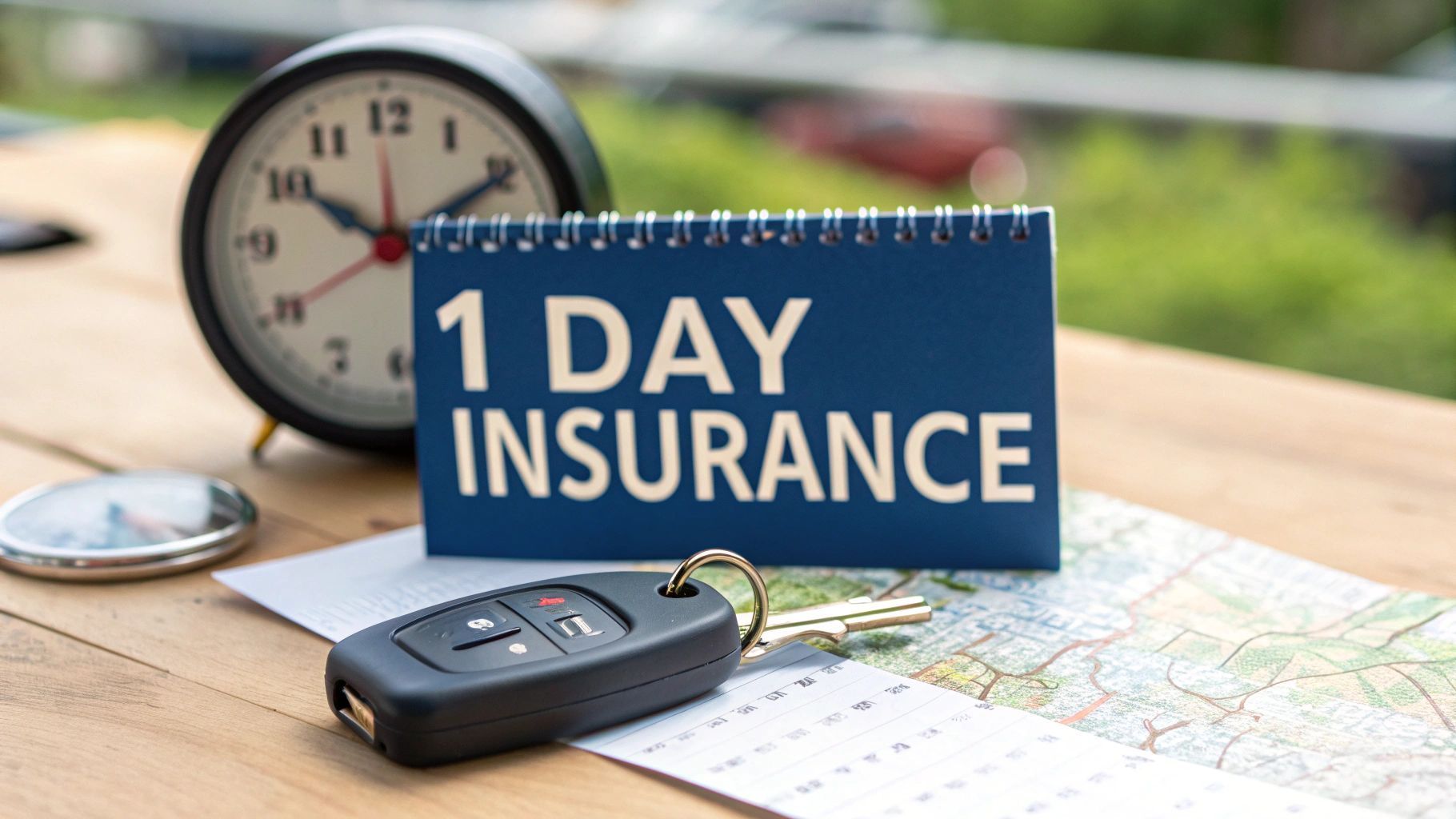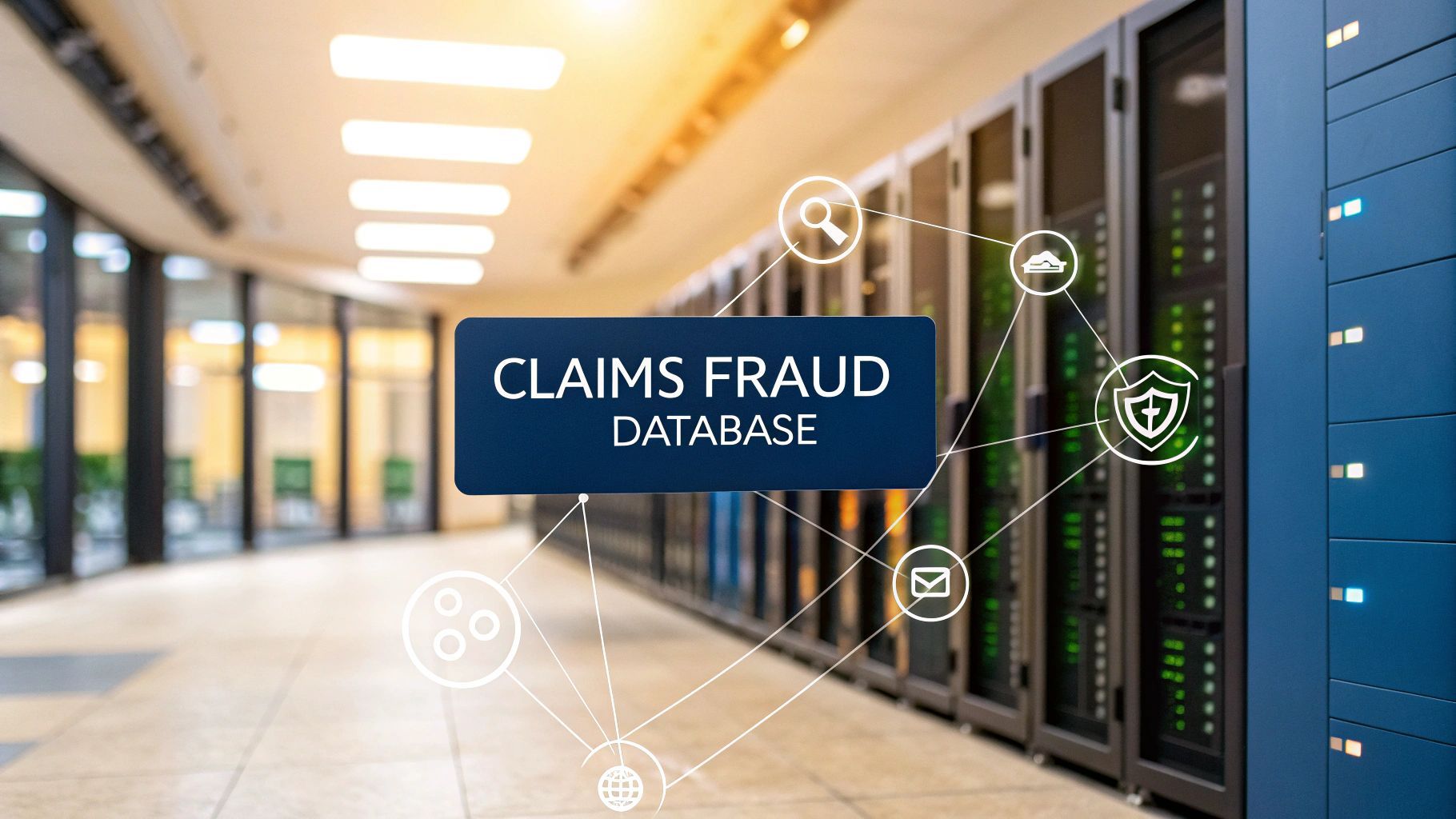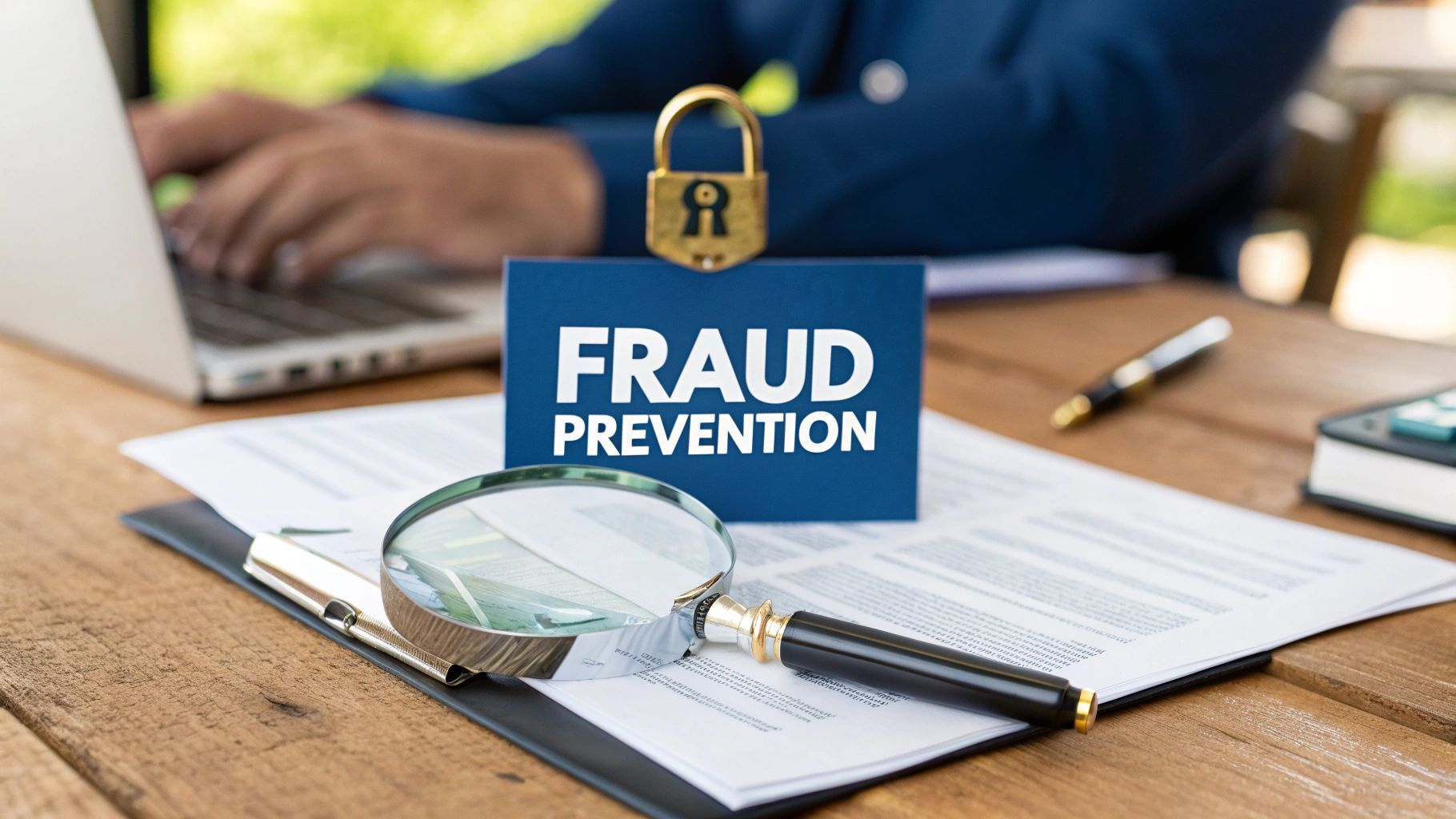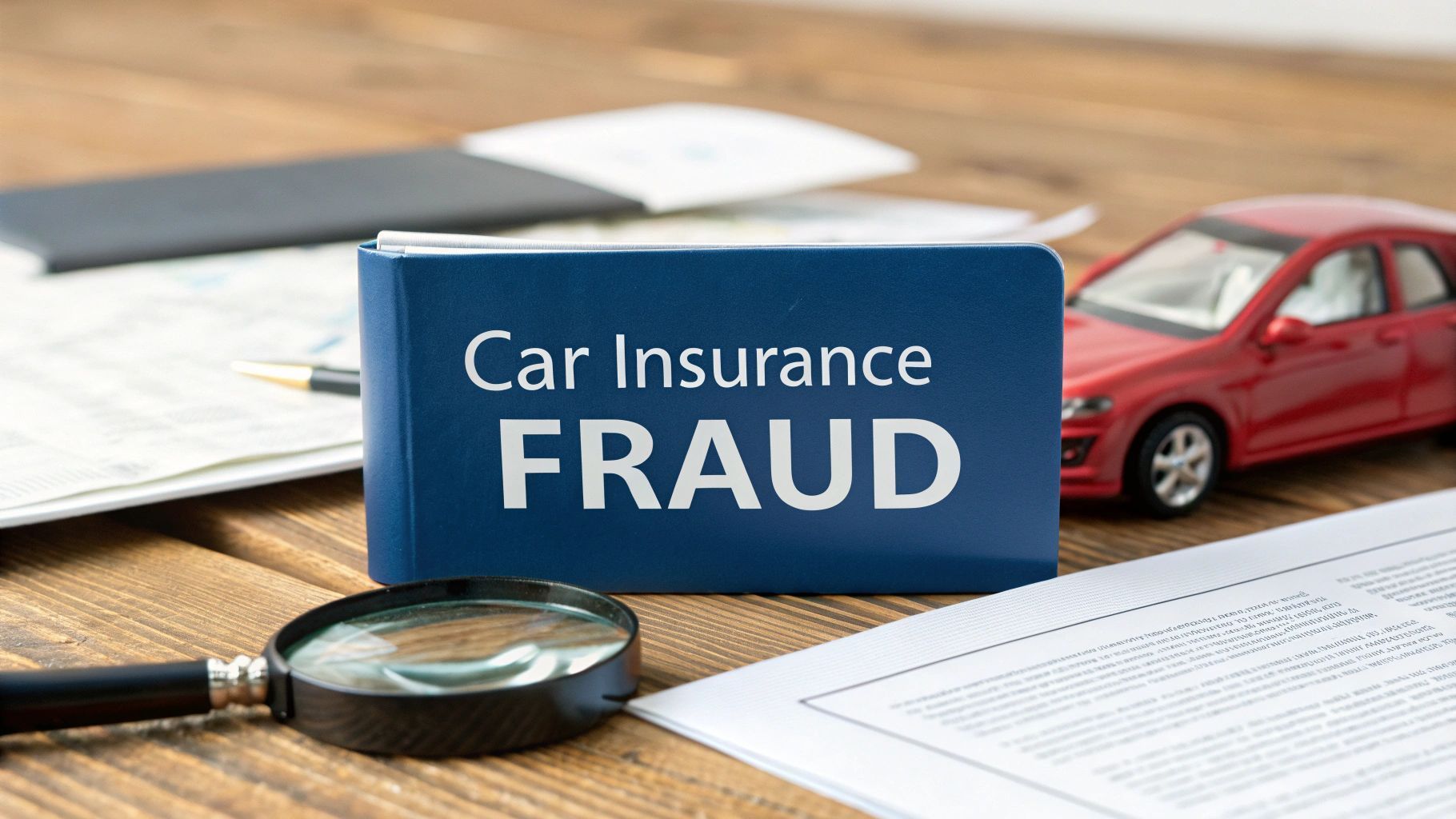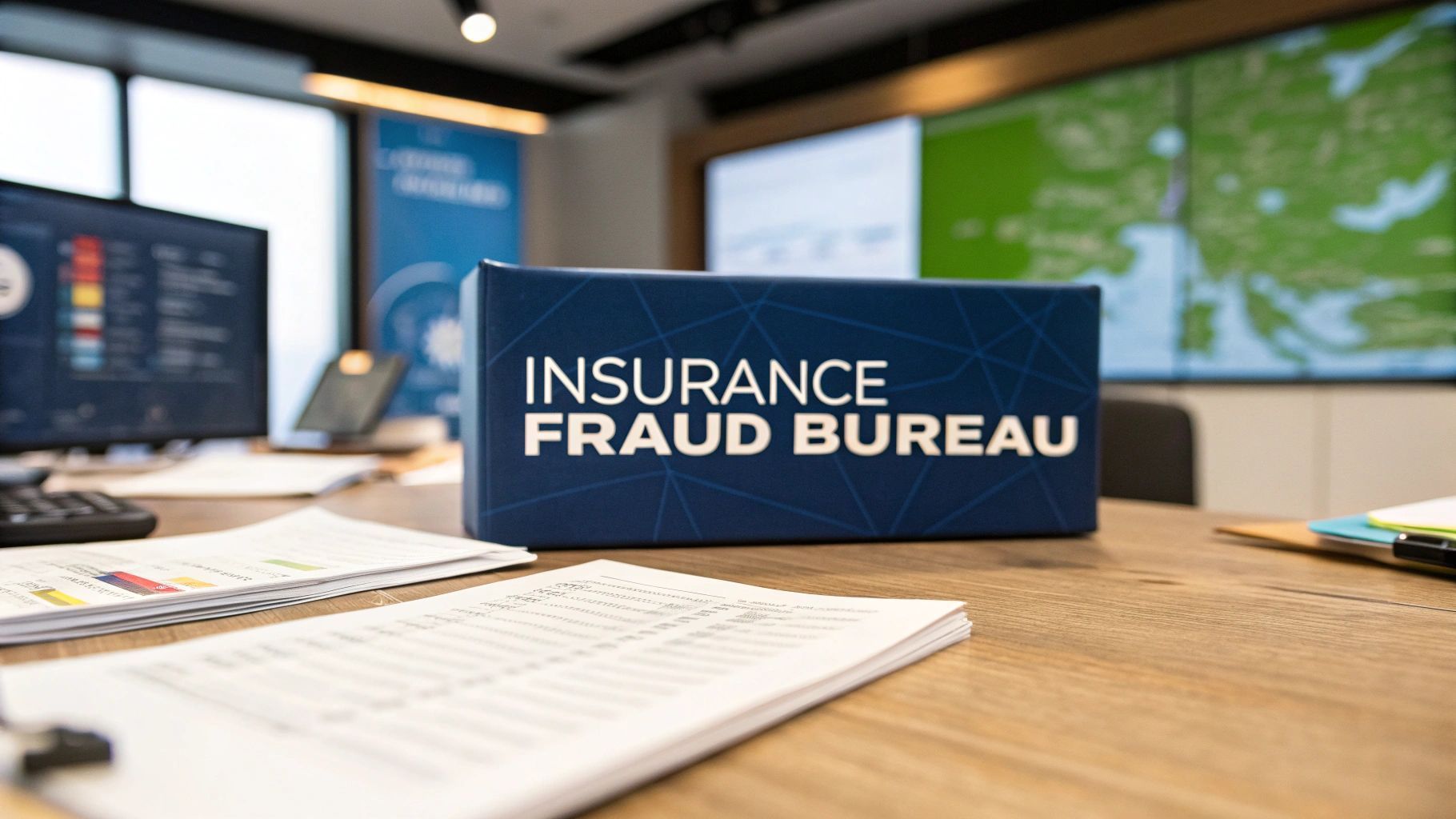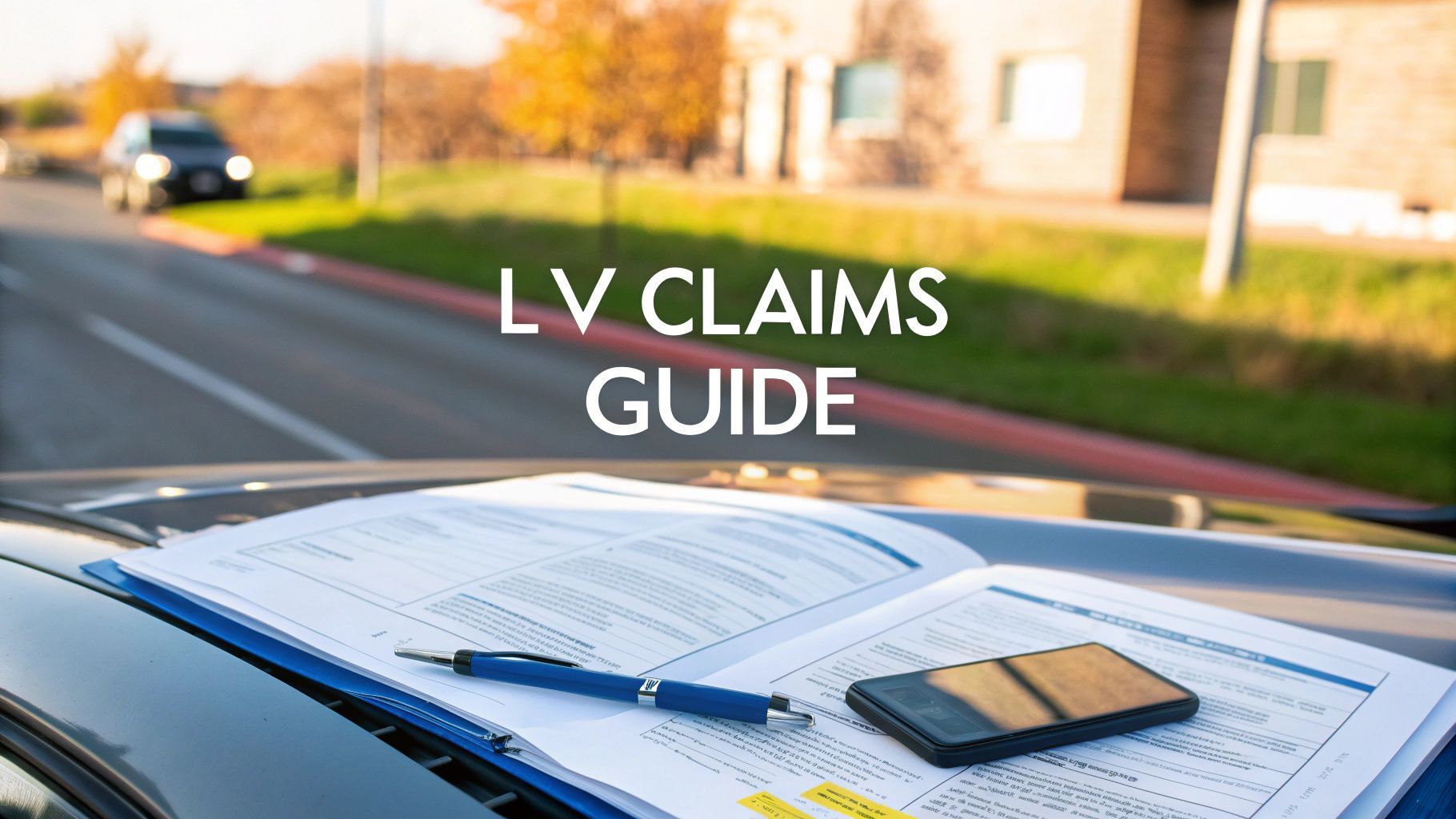Engagement Ring Insurance UK A Complete Guide
An engagement ring is so much more than a piece of jewellery; it is a promise, a memory and a serious financial investment all rolled into one. That is why specialist engagement ring insurance in the UK is so important. It offers dedicated protection against loss, theft and accidental damage in a way that standard home insurance policies often cannot match.
Let's walk through why this focused cover is so essential, what it typically costs and how proving you own the ring is central to keeping the insurance system fair for everyone.
Why Your Engagement Ring Needs Specialist Insurance
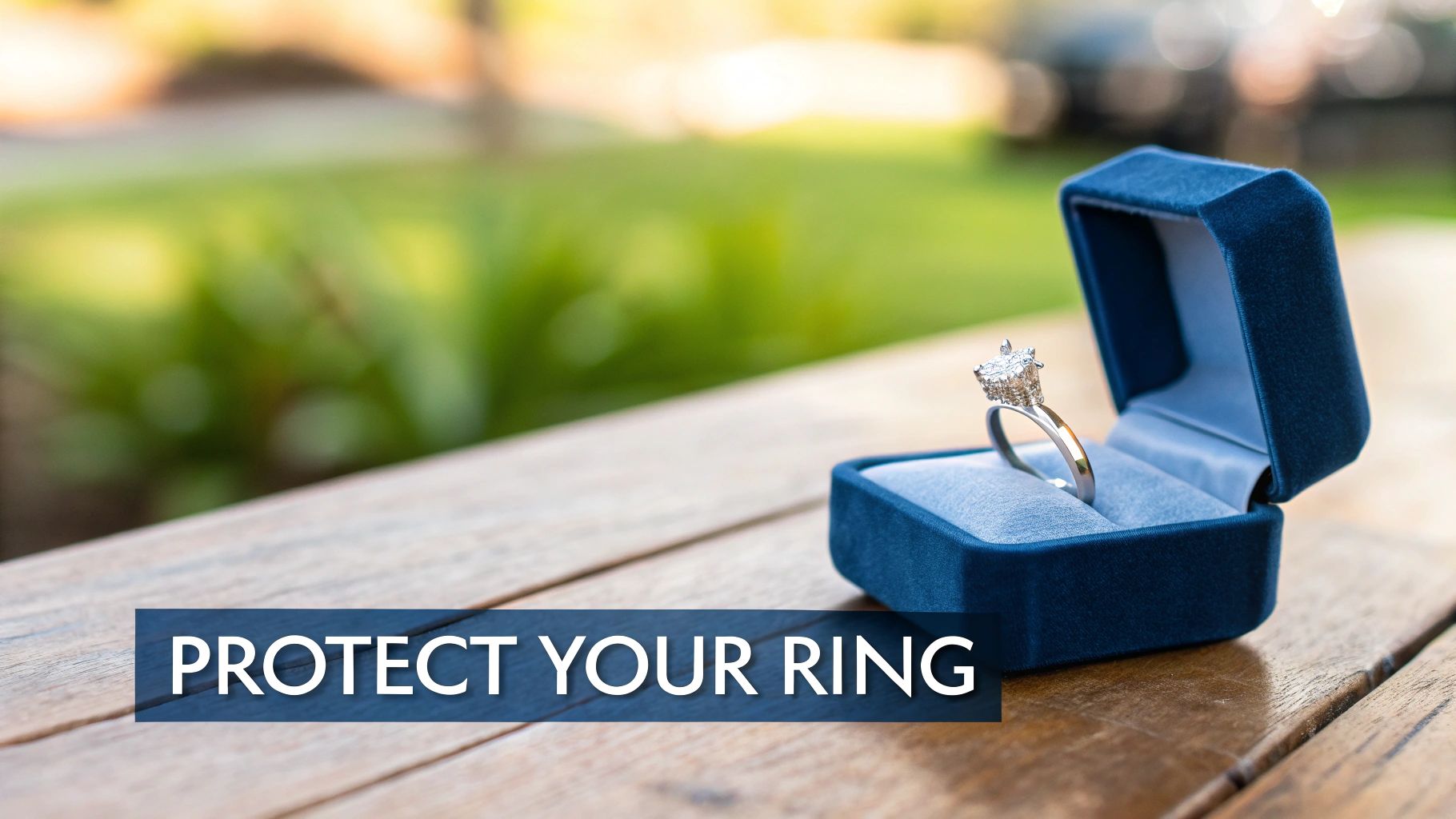
Think about what that ring truly represents. It is a deeply personal symbol, a promise for the future captured in precious metal and stone. While its sentimental value is priceless its financial value can—and absolutely should—be protected.
Relying on a standard home contents policy often creates a false sense of security. It is a lesson many homeowners unfortunately learn only after a devastating loss.
The Problem of Underinsurance
Most standard home insurance policies have something called a ‘single article limit’ which often caps cover at around £1,500 to £2,000 . With the average cost of an engagement ring in the UK sitting comfortably above this it is easy to see how so many people are unknowingly underinsured.
A specialist policy is different. It ensures your ring is covered for its full appraised value—not just a fraction of it.
On top of that a dedicated policy usually provides cover for accidental damage and loss outside the home including worldwide travel. This is a level of protection most standard policies just do not offer without a hefty premium increase or a separate add-on.
The Hidden Costs of Fraud
Unfortunately the high value of jewellery makes it a prime target for insurance fraud and this is not a victimless crime. When someone makes a false claim or deliberately inflates the value of a lost or stolen ring it forces insurers to spend more on investigations and pay out on illegitimate losses.
Insurance fraud ultimately costs every honest policyholder. To compensate for fraudulent payouts and the resources needed to investigate them insurers must raise premiums across the board. This means that a dishonest few directly contribute to higher costs for everyone seeking genuine protection.
This is exactly why provability is so important. A legitimate claim needs clear evidence of ownership and value like receipts, photos and professional valuations. This does not just speed things up for genuine claimants but it also acts as a powerful deterrent against fraud. It helps maintain the integrity of the whole system keeping cover fair and affordable for everyone.
Before diving into insurance it is worth understanding what goes into valuing a ring in the first place. For a great overview have a read of this guide on Choosing Your Perfect Engagement Ring.
The Pitfalls of Relying on Standard Home Insurance

It is a common assumption and an understandable one: your home contents insurance has your new engagement ring covered. While it might offer some basic protection relying solely on it is a bit like using a plaster for a broken bone—it is just not built for the job. This is where big gaps in protection can appear leaving you exposed financially and emotionally when you can least afford it.
The most frequent trap is something called the ‘single article limit’ . This is the absolute maximum an insurer will pay out for any single item and on most standard policies this figure is surprisingly low often capped between £1,500 and £2,000 . If your ring is worth more you will only get the maximum limit not what it would actually cost to replace.
Just picture it: your ring is worth £5,000 but your policy’s single article limit is £1,500. After a burglary you would be left with a £3,500 shortfall. It is a heartbreakingly common scenario that shows exactly why a one-size-fits-all policy rarely fits something so valuable.
Cover Outside The Home Is Not Guaranteed
Another huge limitation is what happens when you are not at home. A standard policy protects things inside your four walls but an engagement ring goes everywhere with you—to work, on holiday, out with friends. Unless you have specifically paid extra for ‘personal possessions’ cover your ring is probably uninsured the second you walk out the door.
This is where specialist engagement ring insurance really shines. It is designed differently from the ground up and usually includes worldwide cover as standard protecting you against:
- Theft: Whether it is taken from your home or snatched while you are abroad.
- Accidental Damage: Like chipping a stone on a doorframe or damaging the band.
- Loss: For that awful moment when you realise it is simply gone.
Standard home policies often exclude accidental damage completely or only offer it as a pricey add-on leaving you to cover the cost of expensive repairs yourself.
The Impact On Your Entire Home Policy
Even if your ring is covered under your home insurance making a claim can have knock-on effects. A claim for a single item like a ring can push up the premium for your entire contents policy when it is time to renew. Worse it could wipe out the no-claims bonus you have carefully built up over the years.
This connection can be a serious financial drawback. A specialist policy on the other hand keeps the risk separate. A claim on your ring insurance will not touch your home or car insurance premiums keeping your other policies safe. If you want to dive deeper into the general process you can master the home insurance claims process with our guide.
It is no surprise that specialist policies are becoming more popular. With UK trends showing a rise in ring values and a love for bespoke jewellery standard home insurance just is not cutting it anymore. Those restrictive single-item limits are a major reason people are making the switch.
This is part of a bigger picture. The global market for this type of insurance was valued at around $1.31 billion and is expected to more than double by 2033. This reflects a worldwide recognition of these exact pitfalls. The limitations of a general policy make a powerful case for dedicated protection ensuring your most precious item gets the specific cover it truly deserves.
Getting to Grips with Your Policy: What’s Actually Covered?
Insurance policies can feel like they are written in another language full of jargon and clauses that make your head spin. But when it comes to something as precious as your engagement ring you need absolute certainty about what you are buying into. A specialist policy is built to be clear and specific offering protection that fits the unique nature of such a valuable item.
So let's break down the core components of a typical engagement ring insurance policy here in the UK. Understanding these terms is the first step towards feeling confident in the cover you choose.
The Four Pillars of Protection
Most specialist policies are built around four key types of cover. Think of them as the four pillars holding up your peace of mind. Each one is designed for a different real-world scenario giving you broad protection against the most common risks your ring will face.
Here’s a practical look at what each term really means:
- Accidental Damage: This covers those heart-stopping moments. Imagine catching the setting on a car door and bending a prong or chipping the main stone on a granite worktop. Accidental damage protection is there for those everyday mishaps you just cannot plan for.
- Theft: This one is pretty straightforward but absolutely vital. It protects you if your ring is stolen whether it is taken from your home during a burglary or snatched while you are out and about. It is one of the main reasons people seek out proper insurance cover in the first place.
- Loss: This applies when your ring is simply gone and you have no idea where. Say it slips off your finger while swimming in the sea or you accidentally leave it behind in a hotel room. This part of the policy is designed to kick in when it has vanished without a trace.
- Mysterious Disappearance: This is a subtle but important distinction from loss. It covers situations where you cannot explain how the ring vanished—you know where it should be but it is not there and there is no sign of theft. It is a safety net for those truly baffling situations.
Why a Professional Valuation is Non-Negotiable
A professional valuation is the foundation your entire policy is built on. It is not just a nice-to-have but it is a mandatory requirement for almost every UK insurer before they will even think about issuing a policy for an engagement ring. This document prepared by a certified jeweller gives an official detailed description of your ring and its current replacement value.
This appraisal serves a critical purpose: it establishes the ‘sum insured’ . That is the maximum amount the insurer will pay out if your ring is lost or stolen. It ensures you are not underinsured and can actually replace your ring with one of the same quality and value. Without it you are just guessing at the ring's worth which can lead to a world of disappointment if you ever need to make a claim.
UK engagement ring insurance providers insist on this partly because of the rising value of these items. With the UK average engagement ring price now hovering around £2,000 —and plenty of couples spending much more—insurers need a verifiable figure to base their policies on. This detailed approach is a major step up from standard home insurance which often lacks this level of precision. To see more data on this trend you can explore the market research on engagement ring insurance.
An up-to-date valuation is your proof. In the world of insurance provability is everything. The valuation certificate is your primary piece of evidence confirming the ring's characteristics and value making any future claim process smoother and more transparent.
Understanding the Fine Print: Common Exclusions
Just as important as knowing what is covered is understanding what is not. Every policy has exclusions and being aware of them from the start prevents any nasty surprises down the line.
One of the most common exclusions is general wear and tear . Insurance is designed for sudden and unforeseen events not the gradual deterioration that happens over time. Little scratches on the band from daily life for instance typically are not covered.
Another frequent exclusion is deliberate damage or loss. Insurance is there to protect against accidents not intentional acts. Similarly if you fail to take reasonable care—like leaving your ring unattended on a public beach while you go for a swim—your claim could be denied. Taking five minutes to read the exclusions section of your policy document is essential for getting a complete picture of your protection.
Calculating the Cost of Your Ring Insurance
So how much is peace of mind actually going to cost? While every quote for engagement ring insurance in the UK is tailored to the individual insurers are not just picking numbers out of thin air. They use a consistent set of factors to weigh up the risk and calculate your premium.
The biggest piece of the puzzle as you might expect is the ring's value. The more it is worth the more it will cost to insure. A good rule of thumb is to expect your annual premium to be somewhere between 1% and 2% of the ring's total appraised value. But that is just the starting point.
From there a few personal details come into play each nudging the final price up or down. Insurers need to build a clear picture of the risk they are taking on which is why your quote is completely unique to you and your situation.
Key Factors That Influence Your Premium
Think of your premium as a base rate set by the ring's value which is then adjusted by your personal risk profile. This is why two people with identical rings could end up with very different insurance costs.
Here are the main things insurers will look at:
- Your Postcode: Where you live really does matter. Insurers use location-based data to figure out the risk of theft in your area. A postcode with a higher crime rate will almost certainly lead to a higher premium compared to a lower-risk one.
- Your Age: Believe it or not your age can be a factor. Statistically different age groups are associated with different levels of risk and this can be reflected in the cost.
- Your Claims History: Have you made insurance claims before? A history of previous claims—for any type of insurance—can signal to an insurer that you are more likely to claim again. This can result in a 'loading' on your premium pushing up the final cost.
This infographic breaks down the main risks that engagement ring insurance is designed to protect you against.
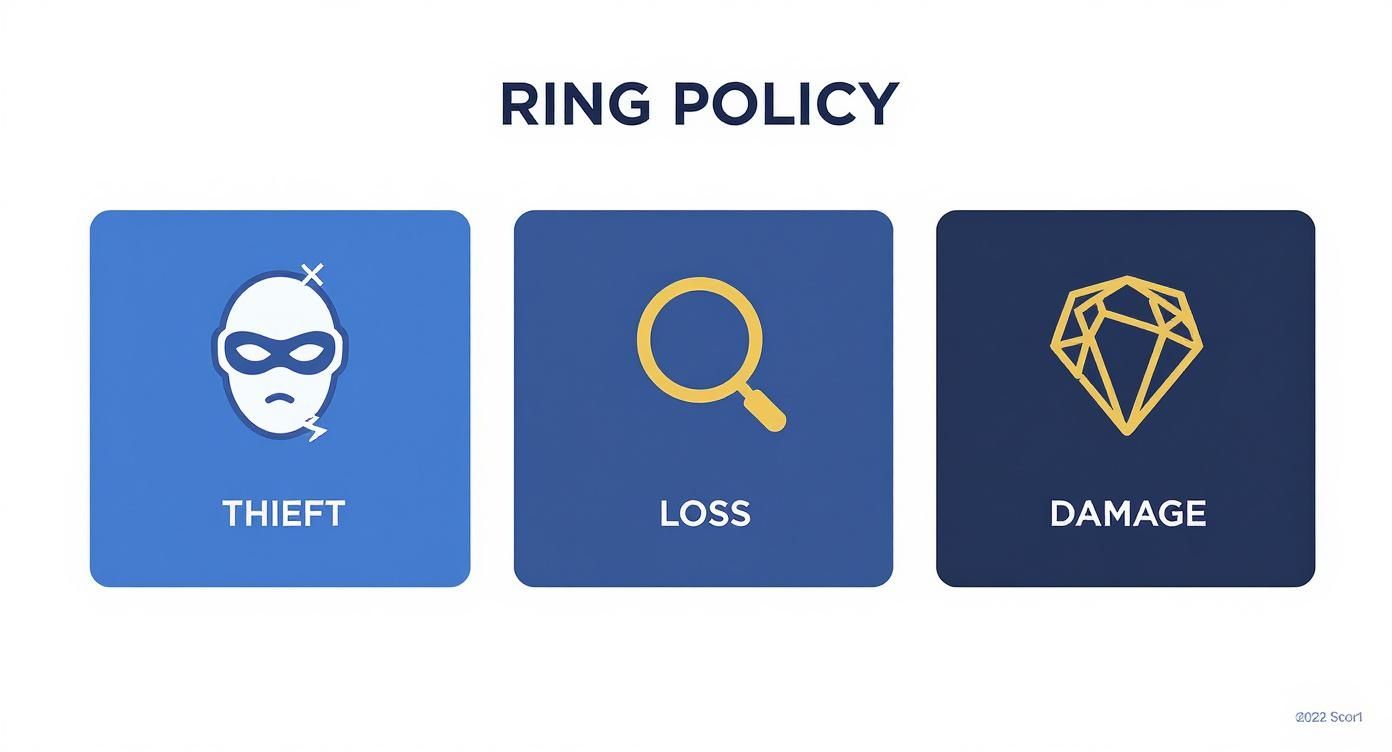
As you can see theft, loss and damage are the cornerstones of any good policy which highlights why it is about much more than just a single type of risk.
Putting It All Together: A Real-World Example
Let's make this a bit more concrete. Engagement ring insurance premiums in the UK often start from around £109 per year . This figure usually includes the 12% Insurance Premium Tax (IPT) and a standard broker fee.
The final price is typically worked out by taking a percentage of the ring's value (often 1.3–1.5% ) and then fine-tuning it based on your postcode and age. If you have a claims history you might see a loading of around 10% added on top. You can get further insights into engagement ring insurance costs to see how these figures are broken down.
The key takeaway is this: your premium is a direct reflection of risk. Once you understand the factors at play you can see why quotes vary and appreciate that you are paying for protection that is specifically matched to your valuable item and your personal circumstances.
To give you an even clearer picture the table below shows how these factors can interact. It gives you a feel for the financial impact your postcode and claims history can have on the final cost of your policy.
Example Annual Premium Calculations for Engagement Ring Insurance
| Ring Value | Risk Profile (Postcode/Claims) | Estimated Annual Premium* |
|---|---|---|
| £5,000 | Low Risk | £75 - £95 |
| £5,000 | High Risk | £100 - £125 |
| £10,000 | Low Risk | £130 - £160 |
| £10,000 | High Risk | £170 - £210 |
| £15,000 | Low Risk | £195 - £240 |
| £15,000 | High Risk | £255 - £315 |
*These are illustrative estimates and include a typical base rate plus Insurance Premium Tax. The final premium will vary depending on the specific insurer and your individual details.
As you can see a higher-risk profile can significantly increase your premium even for a ring of the same value. It really pays to understand what insurers are looking for.
How Insurance Fraud Impacts Every Policyholder
It is easy to think of insurance fraud as a victimless crime a clever way to outsmart a big faceless corporation. The reality is something else entirely. When it comes to something as personal as an engagement ring fraud creates a damaging ripple effect that ultimately hurts every honest policyholder.
This is not a harmless act against a company but it is a shared problem that forces insurers to divert resources and inevitably raise premiums for everyone.
The Ripple Effect of a Single False Claim
Think of the insurance system as a communal pool of money. Everyone pays their premium into this pool and when someone has a genuine loss they can draw from it to be made whole again. Insurance fraud is like someone secretly drilling holes in the side of that pool.
Every bogus payout whether it is for a completely fabricated theft or a wildly exaggerated valuation drains this shared resource. To keep the pool from running dry the insurer has only one real option: increase the contributions from everyone else. This means your premium for engagement ring insurance in the UK goes up not because your personal risk has changed but to cover the cost of someone else’s dishonesty.
And it is not just about covering the fraudulent payouts themselves. Insurers also have to spend a fortune on:
- Investigation Costs: Hiring specialists to verify claims, check police reports and authenticate documents.
- Legal Fees: Taking legal action against those caught committing fraud.
- Administrative Overheads: The sheer time and manpower spent processing and rejecting dishonest claims.
All these expenses are eventually passed on to customers in the form of higher premiums.
Why Provability Is Not Just Paperwork
This brings us to why provability is so important. When an insurer asks for a valuation certificate, original receipts or clear photos of your ring it is not just red tape. This evidence serves two vital functions.
First it helps ensure your genuine claim can be processed quickly and fairly getting you the correct settlement without unnecessary delays. Second it acts as a powerful deterrent against fraud. Someone trying to claim for a ring they never owned or one with a hugely inflated value will find it very difficult to produce this essential proof.
Insurance fraud is a significant issue with opportunistic cases making up the bulk of fraudulent claims. These acts often perceived as minor embellishments collectively force insurers to raise premiums meaning honest customers bear the financial burden of others' dishonesty.
This rigorous verification process protects the integrity of the whole system. By making it harder for fraudulent claims to succeed insurers can keep that communal pool of funds healthier. That in turn helps keep cover affordable and accessible for genuine policyholders like you. For a deeper dive into the scale of this issue you can read more about what insurance fraud really costs the industry.
The Serious Consequences for Those Caught
The impact of insurance fraud is not just financial for the community as the personal consequences for those caught are severe and long-lasting. It is a criminal offence that can lead to far more than just a denied claim.
Attempting to defraud an insurer can result in:
- A Criminal Record: A conviction for fraud can have a lifelong impact on your job prospects and even your ability to travel to certain countries.
- Financial Penalties: On top of repaying any money obtained through fraud courts can impose substantial fines.
- Being Blacklisted: Once you are caught you will find it incredibly difficult and expensive to get any kind of insurance in the future. You will be added to industry databases like the Insurance Fraud Register marking you as a high-risk individual to all UK insurers.
Ultimately protecting the system is a shared responsibility. By understanding how fraud impacts everyone we can see why robust checks and the need for clear proof of ownership are not obstacles—they are essential safeguards. They make sure that when you genuinely need help the support you paid for is there for you.
Making a Claim and Proving You’re the Owner

If the worst happens and your ring is lost, stolen or damaged being prepared is your biggest advantage. The emotional side of things can be overwhelming but the insurance claim itself does not have to be a nightmare. Having the right paperwork ready not only makes everything go smoother but is also central to the idea of ‘provability’ that the entire UK insurance world is built on.
Insurers need to be sure that a genuine loss has actually happened and that the item you are claiming for is the exact one covered by your policy. This is not about them putting up barriers but it is a vital step to protect the system from insurance fraud which ultimately drives up costs for every honest person with a policy.
The First Steps to Take When Making a Claim
Knowing what to do in the immediate aftermath of an incident can make a huge difference to how your claim turns out. A clear quick response gives your insurer the information they need to get the ball rolling without delay.
Here’s the typical game plan:
- Contact the Police (If It's Stolen): This is your absolute first move if theft is involved. You will need a crime reference number from them to pass on to your insurer—it is the official proof that the incident was reported.
- Notify Your Insurer: Get in touch with your insurance provider as soon as you reasonably can. They will walk you through their specific claims process and let you know exactly what forms and evidence you need to provide.
- Gather Your Documents: This is where all your prep work pays off. You will need to supply the key evidence that proves you own the ring and confirms what it is worth.
Why Evidence and Provability Are So Critical
When it comes to insurance today provability is everything. Your ability to show clear undeniable evidence of ownership and value is what makes the difference between a straightforward claim and a long complicated headache. Insurers need solid proof to process a claim properly and shut down fraudulent activity.
This is exactly why keeping meticulous records is so important. Think of it like building a case file for your ring right from the very first day. The essential documents you will need are:
- The Original Purchase Receipt: This is your number one proof of ownership.
- A Professional Valuation Certificate: This document confirms the ring’s specific details and its replacement value which is what your insured sum is based on.
- Clear Photographs: Good quality photos from different angles can be a massive help for jewellers trying to identify or even recreate the piece.
When you are in the middle of a claim proving the authenticity and specific details of your ring is non-negotiable. This is where understanding the importance of diamond certification really comes into play as it offers an independent third-party verification of your diamond’s quality. It is also worth reading up on why your insurance company might refuse to pay a claim and what you can do about it.
Securely documenting your ownership from day one is the single most effective way to guarantee a fair and efficient claims process. Modern verification tools are making this easier than ever helping genuine claims fly through while stopping fraudulent ones in their tracks.
This focus on provability is good for everyone. It ensures people with genuine claims get the settlement they are entitled to quickly and it helps protect the integrity of the whole system. Ultimately that is what keeps engagement ring insurance in the UK fair and affordable for us all.
Common Questions About Ring Insurance
Even after you have done your research a few final questions can pop up when deciding on the right protection. Getting clear straightforward answers is the key to feeling confident that you have made the right choice for your engagement ring insurance.
Should I Get My Ring Re-valued Regularly?
Yes absolutely. The value of precious metals and gemstones is not static; it fluctuates with the market. That is why getting your ring re-valued by a professional every two to three years is a really smart move.
An up-to-date valuation ensures you are not left underinsured. It means your policy will cover the full current replacement cost if you ever need to make a claim not just what it was worth years ago.
What Happens if I Lose My Ring Abroad?
Do not panic. Most specialist engagement ring policies in the UK include worldwide cover as standard. If your ring is lost or stolen while you are on holiday your first step should always be to report it to the local police especially if a crime was involved.
Next get in touch with your insurer as soon as you can. They will walk you through their claims process which you can often kick off even while you are still away from home.
It is worth remembering that making a claim might affect your renewal premium. Like other types of insurance a claim can be seen as an indicator of higher future risk and could mean losing any no-claims bonus you have built up.
Can I Add the Ring to My Partner's Insurance?
You can but the details have to be spot on. The policy must clearly state who the ring’s main owner is and who wears it day-to-day to avoid any mix-ups if you need to make a claim.
While you could add it to a joint home contents policy double-check the single-item limit to make sure it is high enough. For a specialist policy it usually makes the most sense for the person who actually wears the ring to be the primary policyholder named on the documents.
At Proova , we help simplify the proof of ownership part of any claim, making the process faster and more secure for both you and your insurer. By creating an undeniable digital record of your most valued possessions, you can ensure your genuine claim is handled without unnecessary delays. Learn more about how to protect your assets with Proova.


